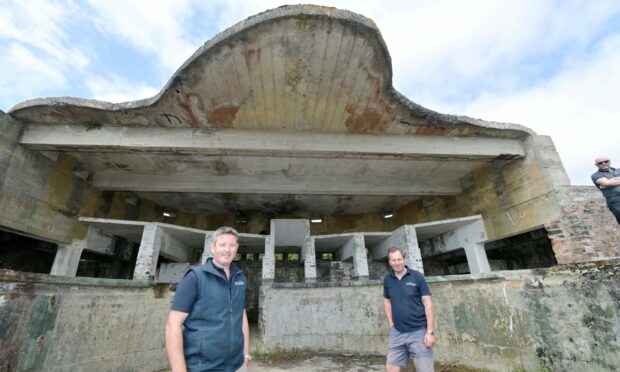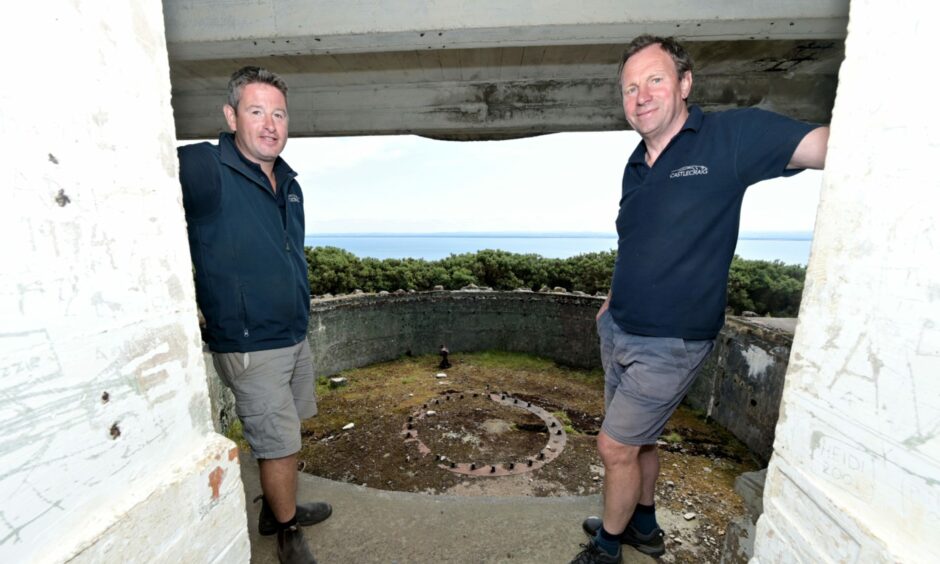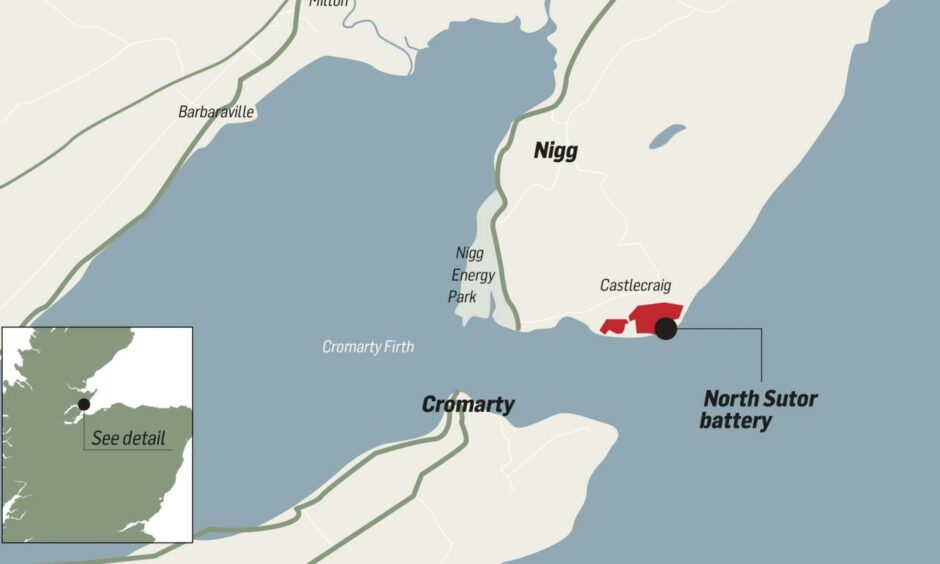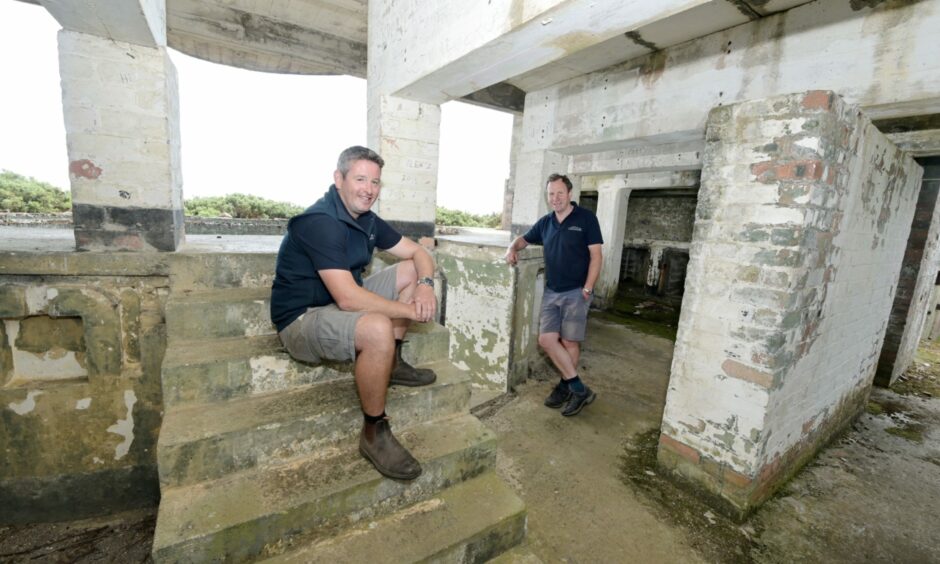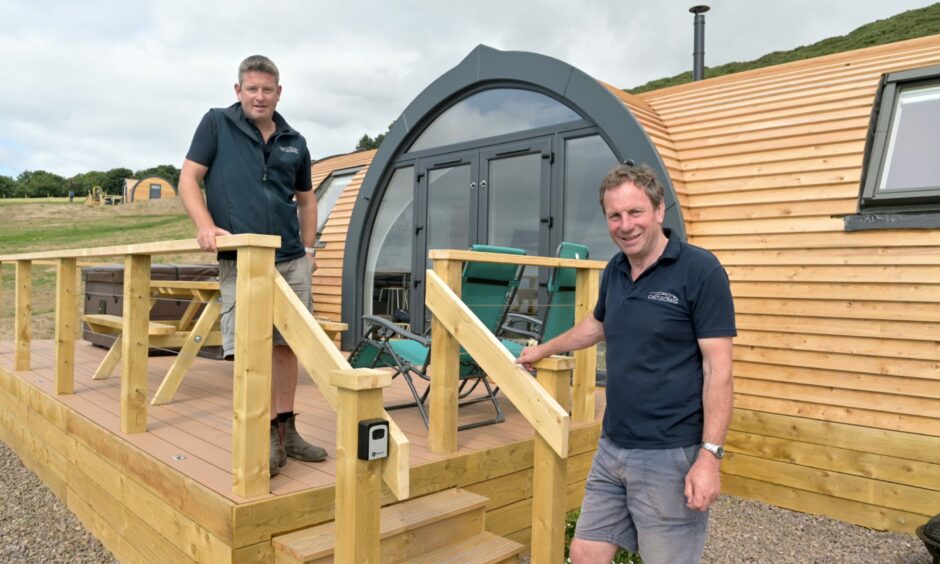In the war years, the site was regarded as strategically important to the national defence.
In the post-Brexit and Covid era, it could have a new and significant role to play in a tourism campaign.
Overlooking the Cromarty Firth at Nigg in Easter Ross, the family-run Castlecraig Farm is seeking ways to diversify with the agriculture sector facing political and market uncertainty.
Which has put the collection of abandoned and derelict buildings scattered across the clifftops on the radar.
Why was the site important during wartime?
These are the remains of a First and Second World War coastal artillery battery with associated accommodation camps and structures.
Commissioned by Churchill and built from 1913, the North Sutor battery was a vital part of a national defensive system from Shetland to Cornwall.
The scheduled monument includes:
- an underground operations block
- gun and searchlight emplacements
- observation posts
- and other structures in varying degrees of survival
Up to 300 people were stationed at the site, which was subsequently abandoned and finally closed in 1956.
But there is hope that new life could be breathed into the facility.
After repairing and conserving the ruins, a masterplan envisages creating a visitor centre.
Anderson shelter-type accommodation and tourist pods are also earmarked at wartime look-outs.
The site already attracts walkers and wartime enthusiasts.
And its location, on the Easter Ross peninsula, may be ideal for luring more visitors detouring from the North Coast 500.
The famous tourist route was established by the North Highland Initiative.
The group’s former chairman, David Whiteford, runs Castlecraig along with wife Joanie, nephew Stephen and his wife Lesley-Ann.
A great community asset
A military-themed project would also be its own hilltop advert for cruise passengers sailing through the firth before docking at nearby Invergordon.
In addition, it could add to attractions promoted by the Tain and District Development Trust (TDDT), including walks, beaches and Pictish heritage sites.
Stephen said: “It’s a great community asset. There is clearly interest as we have seen so many people come through here over the last year.
“It’s raised my eyebrows a bit as to how much interest and enthusiasm there is in the place.
“Initially we want to make it safe. But we also want to preserve it and do something informative.”
David added: “It has the potential to be an important heritage attraction.
“I’d have thought it essential that we hold on to the memory of what these key points in our history were about and why we needed defences at this particular location.
“There is a real momentum building locally with tourism encouraging people to come off the NC500 to explore this area and stay longer.”
Discussions have been held with Historic Environment Scotland (HES).
It classes the North and South Sutor batteries, on either side of the firth, as nationally important.
Future discussions planned on scheduled monument
A HES spokeswoman said: “The artillery defences on the Sutors of Cromarty are some of the most important and best-preserved First and Second World War remains in Scotland.
“We are always happy to give advice to owners who are keen to improve the condition or public benefits of their scheduled monuments.
“We look forward to further discussion of North Sutor Battery in the future.”
Tourism is a vital part of the masterplan for Castlecraig.
“Without doubt we will be going through a bit of uncertainty for a number of years,” said Stephen.
“We don’t yet know how exactly the current agri policy framework will evolve as we settle into the post-Brexit era.
“Brexit hasn’t been catastrophic so far, but we don’t know what’s going to happen further down the line.”
Green energy plans
The business has already launched Castlecraig Clifftops with four cabins overlooking the Moray Firth.
If it all goes to plan, there will be three more cabins and another four lodges on the hill above.
The aim is to make the farm, which is converting to organic production, and the tourism businesses ‘net zero’.
In other words, completely powered by green energy.
A natural spring will provide a private water supply to the site.
Castlecraig’s own solar farm could also eventually produce electricity.
This would also power a planned maltings supplying zero carbon organic malt to distilleries and micro-breweries, while also having visitor interpretation.
There’s also the possibility of ‘exporting’ excess green electricity to hydrolysis plants, proposed nearby for the production of hydrogen.
Stephen added: “The farm will always be the core of the business. But we want to look ahead and offer opportunities for our successors as well.”
“We will be engaging with the community and want to create local jobs and new opportunities to collaborate with other businesses locally.
“To do this now is definitely the right things to do to future-proof us and our successors.”
A more sustainable type of tourism
Rachel Cunningham, TDDT’s marketing officer, said: “By creating a tourist attraction at the North Sutor battery, Castlecraig Farm will work with us to build on a more sustainable type of tourism.
“This will help us achieve our shared goal to preserve our way of life, ensuring visitor expectations are both managed and met if not surpassed, and every visitor has a high-quality experience.”
